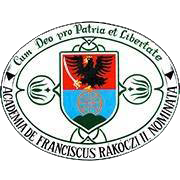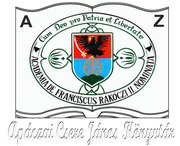Please use this identifier to cite or link to this item:
https://dspace.kmf.uz.ua/jspui/handle/123456789/4732| Title: | Критичний аналіз чинної моделі фінансового обліку інноваційного капіталу та шляхи її розвитку |
| Other Titles: | Critical analysis of the current model of financial accounting of innovation capital and the ways of its development |
| Authors: | Макарович Вікторія Makarovics Viktória Vyktorya Makarovych |
| Keywords: | нематеріальні активи;дослідження та розробки;інноваційна діяльність;інноваційний капітал;intangible assets;research and development;innovative activity;innovative capital |
| Issue Date: | 12-Apr-2024 |
| Publisher: | Державний університет «Житомирська політехніка» |
| Type: | dc.type.article |
| Citation: | Макарович Вікторія: Критичний аналіз чинної моделі фінансового обліку інноваційного капіталу та шляхи її розвитку. In Економіка, управління та адміністрування. 2024. № 1(107). с. 111-119. |
| Series/Report no.: | ;№ 1(107) |
| Abstract: | Резюме. Обґрунтовано необхідність удосконалення чинної моделі обліку інноваційного капіталу в умовах становлення економіки знань. Проаналізовано існуючі підходи до визнання внутрішньостворених нематеріальних активів у П(С)БО 8 «Нематеріальні активи» та в МСФЗ 38 «Нематеріальні активи». Проаналізовано критерії визнання / невизнання розробок підприємства як внутрішньостворених нематеріальних активів згідно з МСФЗ 38. Виявлено відмінності між МСФЗ та іншими національними і міжнародними моделями обліку в частині обліку та визнання досліджень та розробок. Висвітлено проблеми зловживань суб’єктів організації обліку при капіталізації розробок підприємства. Обґрунтовано існування змішаної моделі обліку нематеріальних активів у МСФЗ. Сформовано два варіанти розвитку чинної моделі обліку досліджень і розробок, на сьогодні реалізованої в МСФЗ та НП(С)БО (удосконалення системи критеріїв, що використовуються для визнання розробок, виходячи з позиції прогресизму; розкриття в примітках до фінансової звітності більш деталізованої інформації про причини прийняття рішення про капіталізацію розробок). Abstract. The need to improve the current model of innovative capital accounting in the conditions of the formation of the knowledge economy has been grounded. The existing approaches to the recognition of internally created intangible assets in S(S)BO 8 «Intangible assets» and in IFRS 38 «Intangible assets» have been analyzed. The criteria for recognition / non-recognition of the company’s developments as internally generated intangible assets have been analyzed according to IFRS 38. The differences between IFRS and other national and international accounting models in accounting and recognition of research and development have been disclosed. The problems of abuse by the subjects of the accounting organization during the capitalization of the company’s products have been highlighted. The existence of a mixed accounting model for intangible assets in IFRS has been grounded. Two options for the development of the current research and development accounting model, currently implemented in IFRS and NS(S)BO, were formed (improvement of the system of criteria used for the recognition of developments based on the position of progressivism; disclosure of more detailed information about the reasons for the decision in the notes to the financial statements on development capitalization). |
| Description: | Редакційна колегія: http://ema.ztu.edu.ua/about/editorialTeam Зміст: http://ema.ztu.edu.ua/issue/view/17826 |
| URI: | https://dspace.kmf.uz.ua/jspui/handle/123456789/4732 |
| ISSN: | 2664-2468 (Online) 2664-245Х (Print) |
| metadata.dc.rights.uri: | http://creativecommons.org/licenses/by-nc-nd/3.0/us/ |
| Appears in Collections: | Makarovics Viktória |
Files in This Item:
| File | Description | Size | Format | |
|---|---|---|---|---|
| Makarovich_Viktoriya_Kritichnij_analiz_chinnoyi_modeli_finansovogo_obliku_innovacijnogo_kapitalu_ta_shlyahi_yiyi_ rozvitku_2023.pdf | Макарович Вікторія: Критичний аналіз чинної моделі фінансового обліку інноваційного капіталу та шляхи її розвитку. In Економіка, управління та адміністрування. 2024. № 1(107). с. 111-119. | 2.74 MB | Adobe PDF | View/Open |
This item is licensed under a Creative Commons License





